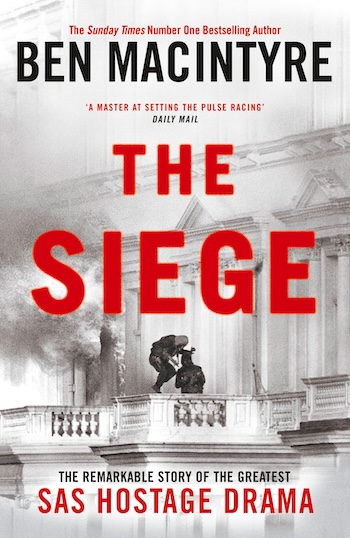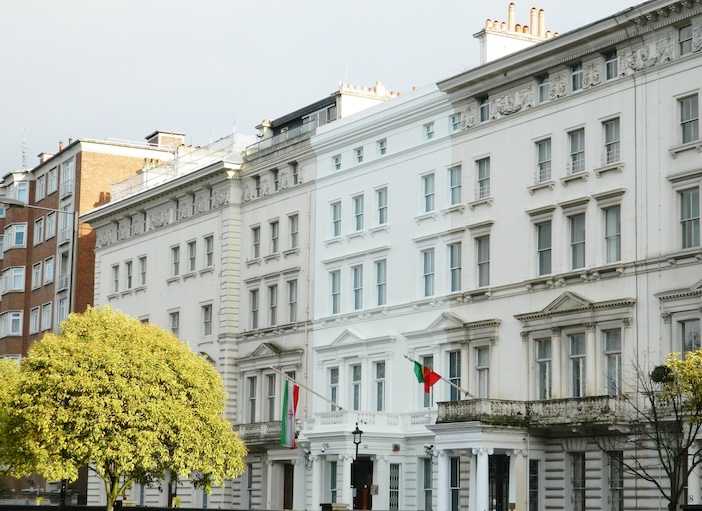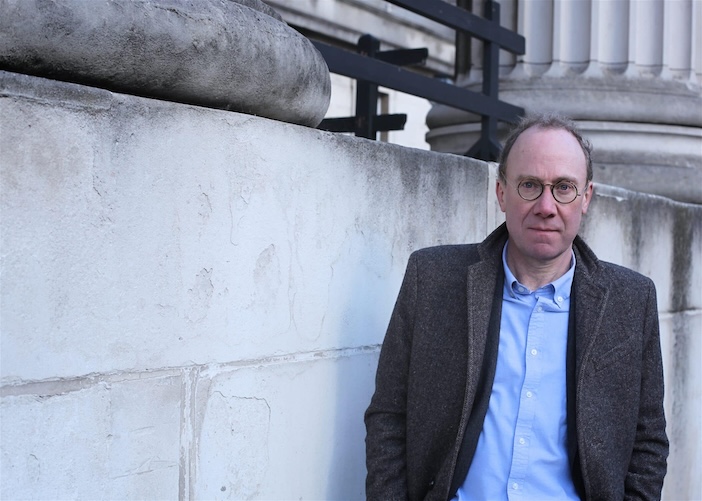Just over 45 years ago, for six days in February 1980, the attention of the media was focussed on London’s Iranian embassy, a short distance from the Albert Hall. Six Iranian Arab gunmen had taken it over in protest against the treatment of their fellow Arabs in Iran and were holding fifteen embassy staff and seven visitors hostage. The world waited with bated breath to see how, despite the release of five of the hostages, the increasingly tense situation would be resolved. The siege could not have ended more dramatically when, following the execution of one of the hostages, the SAS stormed the building and in eleven minutes of mayhem saved all bar one of the remaining hostages.
The ending of the siege was shown live on television as members of the SAS assault teams were seen breaking into the building. It was an iconic moment that changed the public perception of the SAS and resulted in a host of films, documentaries and books giving different versions of the siege and of the assault that ended it. Ben Macintyre, in his recent book The Siege has now produced a superb history that puts all other versions into the shade.
 His version is based on some monumentally detailed research, is full of nuance and brings the characters involved to life as real people rather than cardboard cut-outs. As he states in his preface, he did not set out to produce a black and white morality tale but to show that, in reality, the story was a more complicated one with its share of human error and unintended consequences and with few outright heroes or villains. He has succeeded admirably without in any way undermining the dramatic nature of the story or failing to acknowledge the courage of many of those involved.
His version is based on some monumentally detailed research, is full of nuance and brings the characters involved to life as real people rather than cardboard cut-outs. As he states in his preface, he did not set out to produce a black and white morality tale but to show that, in reality, the story was a more complicated one with its share of human error and unintended consequences and with few outright heroes or villains. He has succeeded admirably without in any way undermining the dramatic nature of the story or failing to acknowledge the courage of many of those involved.
One of the strengths of the book is his appreciation of the psychological aspects of the situation and the effects of the increasing stress and tension on the behaviour of those involved, whether the hostage takers, the hostages or the police negotiators. For the hostage takers, there was the increasing pressure of having to confront the possibility of failure and the increasing likelihood that they would have to start to shoot the hostages to achieve even some of their objectives. The latter was made more difficult as they had come to know their potential victims and had even released five of the original twenty-two for various reasons. For the hostages there was the ever-present threat of being shot, which affected different individuals differently, and the development of their own relationships with the gunmen. Elements of both the Stockholm and Lima syndromes were present during the siege.
For the police negotiators there was the increasing pressure of keeping the hostage takers calm and trying to extract concessions while appearing to move towards agreeing to some of their demands. One of the negotiators cracked under the pressure and had to be replaced. All of this was made worse for all involved by the lack of sleep that started to wear everyone down. As the police psychologist made clear at the time, lack of sleep has an increasingly detrimental effect on both judgement and behaviour.
As for the military, their time was spent in planning, re-planning and re-rehearsing as the information about the hostage takers, the hostages and the building either changed or became more detailed. Of crucial importance was memorising what everyone in the building looked like so that they could distinguish between hostage takers and hostages. The danger and complexity of the task they faced was made more difficult by the structure of the embassy building: there were more than fifty separate rooms spread over six floors including a basement. To make matters worse the ground and first floors had reinforced windows and doors as the result of security advice provided to the embassy staff by the UK government some years earlier. As a result, the SAS assessment of the likely outcome of an assault was, to say the least, bleak: there was a 40% chance that the outcome would be no better than the disastrous German attempt to rescue the Israeli Olympic athletes in Munich with most of the terrorists and all of the hostages dead.
Come the assault, there were all sorts of unplanned mishaps: the building caught fire; one member of the assault team found himself hanging in mid-air and getting burnt because of a jammed abseil rope, until the rope was cut letting him fall ten feet onto a balcony from where he rejoined the assault; and the hostage takers had also unexpectedly moved location within the building. Despite these and other mishaps, the assault was a huge success with only one hostage of the sixteen still in the building being killed and three others with gunshot wounds from which they all recovered. Of the twenty-two taken hostage at the start of the siege twenty had survived.

The Iran Embassy at 16 Princes Gate, London (photo courtesy of WikiCommons)
The release of five hostages during the siege provided a huge amount of information about the hostage takers, their appearance and dress and their characters – all of which assisted both the police negotiators as well as the military planners. Of those that remained throughout three in particular stand out: the steadfast PC Lock who not only managed to keep his pistol hidden throughout the siege until the assault started when he tackled the leader of the hostage takers, he also had a calming influence on both hostage takers and hostages at critical moments; the young and vibrant Iranian woman, Roya Kaghachi, who displayed a calm maturity far beyond her years; the influential Syrian Arab journalist and PLO sympathiser who loved London as his forever home and did his best to influence the hostage takers in a positive direction until he was unexpectedly released, perhaps because they did not want to kill a fellow Arab. It is one of the strengths of Macintyre’s book that the reader gets to know the strengths, weaknesses and motives of all the key characters.
Macintyre also provides insight into the complex politics of the Middle East that lay behind this siege on the streets of London. He illustrates how the siege exposed the extent to which those involved in the wilder fringes of that politics, especially those using terrorism as a mechanism for advancing political causes, used the manipulation of idealists to further their own objectives. The six naïve young men who took over the embassy were recruited by the Iraqi secret service of Sadaam Hussein to use as weapons against Iran. As for the actual mastermind behind the operation, it was the notorious Palestinian terrorist Abu Nidal, who was funded handsomely by Iraq as a useful gun for hire when not furthering his own objectives. In short, the hostage takers and their cause were being used as disposable cannon fodder for other people’s political objectives.

With The Siege Macintyre has produced a superb edition to his growing portfolio of books centred on the world of secret intelligence, security and special forces. For someone without any firsthand experience of these areas he has an uncanny knack of being able to capture the frequently chaotic and sometimes paranoid atmosphere; the challenges of decision-making with often incomplete, partially accurate and changing information; the impact of the psychological pressures on those involved and the mayhem and confusion of any battlefield, even one as small as the Iranian embassy. However, it is his understanding of the human element that sets his books apart, and this one especially, from most of the others in this field. There is inevitably a Boys’ Own element to the story of The Siege but more than anything it is a story about the reactions of ordinary human beings when confronted with an extraordinary situation.
The Siege by Ben Macintyre is out now, published by Penguin. For more information, please visit www.penguin.co.uk.




